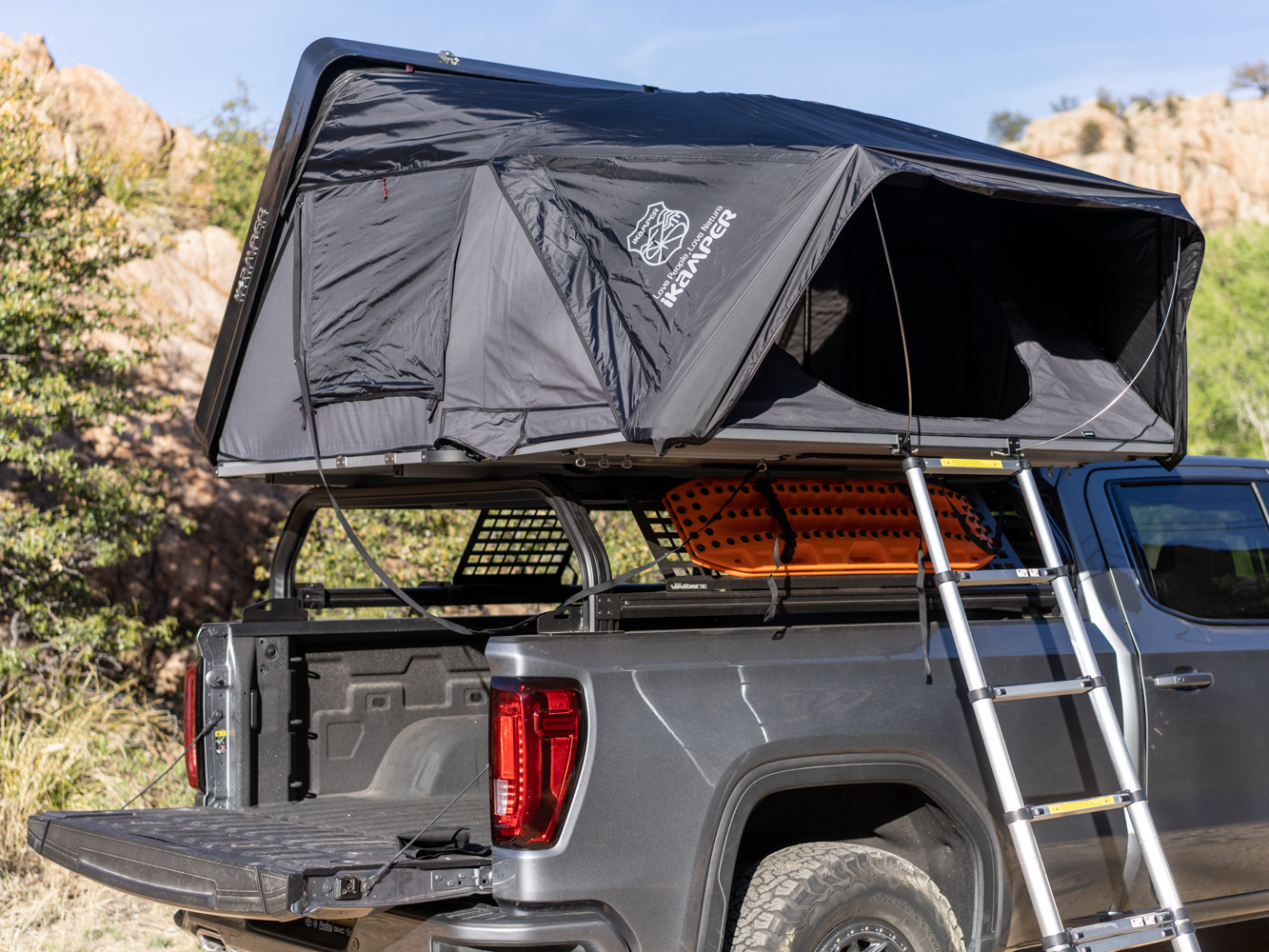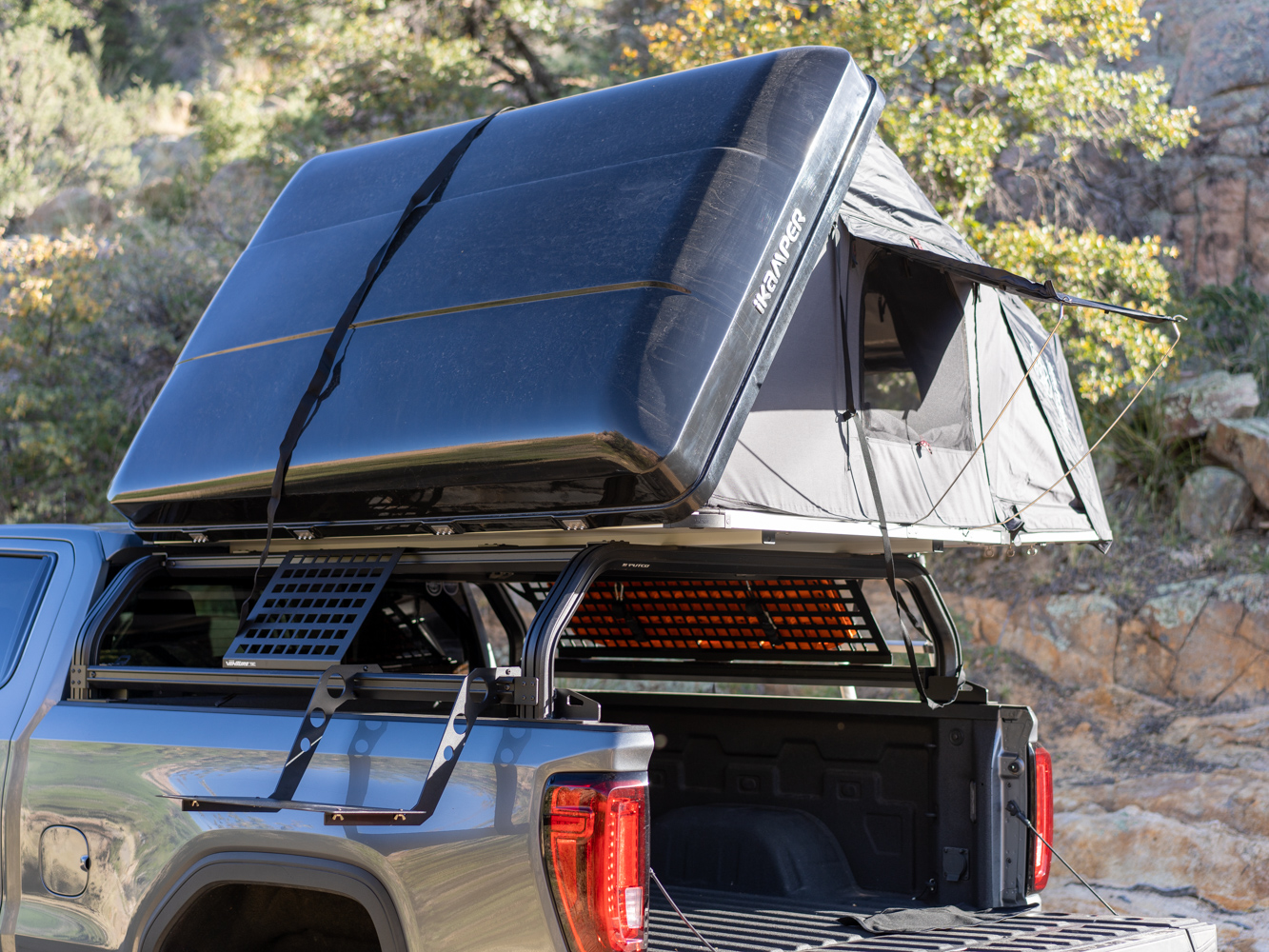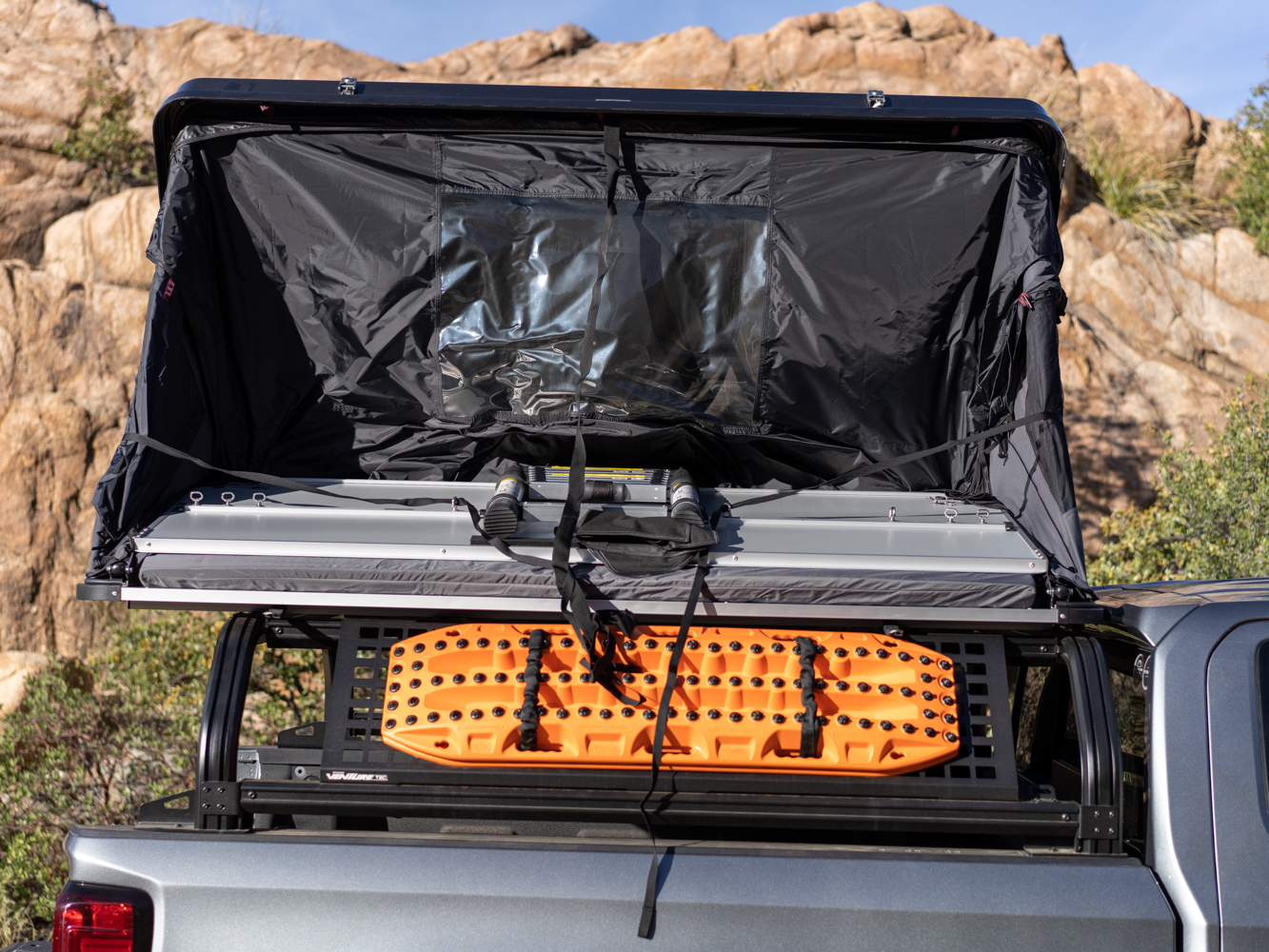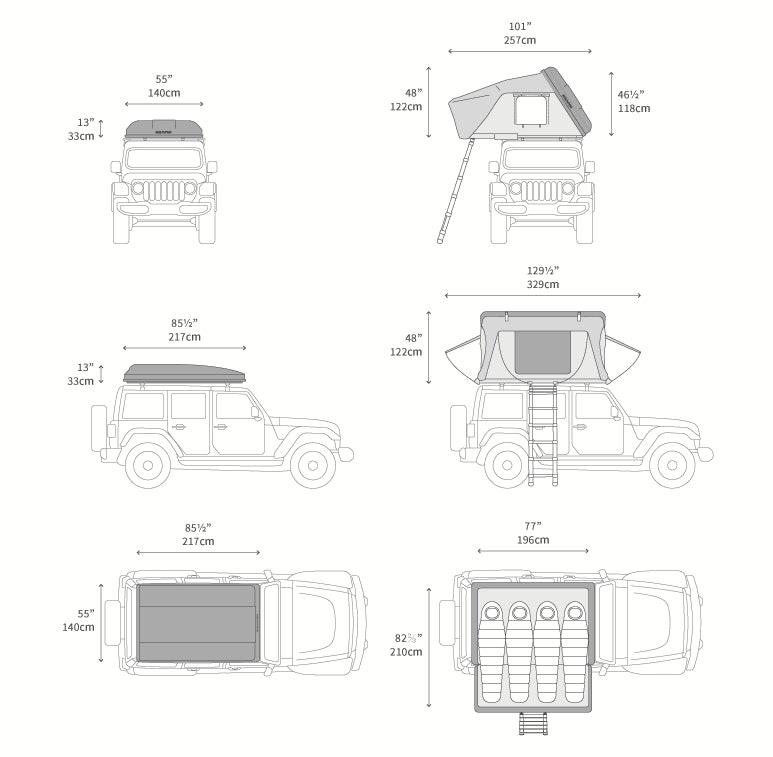iKamper releases their largest Skycamp yet, version 3.0, providing king-sized comfort.
The roof tent has become a boon for vehicle-based travelers, providing tree-fort security with condo comfort. The trail can be rocky or muddy, and the car-top mounted tent keeps you clean and dry. The roof tent also offers the security of being off the ground, far away from snakes, bears, and other bump-in-the-night critters. There are many roof tents on the market, but few are great. We recently tested the new Skycamp 3.0 to determine how it ranks among the best of the best.
Testing products begins with the unboxing to determine how well the product will fare in transit, surviving the rough and often negligent world of product transport. The iKamper came delivered upright on a pallet, strapped for good measure, and contained within a thick cardboard box. The corners were all reinforced, foam pads were at critical points. The tent was covered in a black fabric sleeve. To our relief, it was undamaged, despite crossing an ocean and hundreds of miles of truck transport.


Installing the tent was an easy affair, mounting it to the crossbars of my Putco rack. The iKamper mounting brackets are unique in the market, reversible, and configured to match the profile of popular crossbars. It can also be mounted with traditional plates and bolts. I used the brackets, which clamp via an Allen bolt, tightened using a long-keyed rod with a detachable handle. The rods slide from either end through a hole in the aluminum support extrusion end caps. Installation takes just a few minutes, and the brackets proved durable enough to endure corrugated road vibrations. The brackets do utilize rivets to clamp the two sides of the plates together, which can be a weak point, and should be inspected on a regular basis or upgraded to bolts with nyloc. The clamping system is clever and one of the easiest and most universal brackets to use in the industry.


Once installed, I took the tent out for deployment in the field, and found it just as easy to set up. The clamshell lid is held closed with a pair of steel cables and locking clamps. The locks provide some security, but I suspect they were included more as a safety feature to prevent the tent from popping open unexpectedly. The tension can be adjusted, and the cable is (mostly) covered by a rubber sleeve.


With the clamps open, a press up on the shell gets the gas struts started, and the lid opens to a 75-degree angle (note: it is best to position the shell lid into the wind). The next step requires grabbing the ladder and pulling the extension floor out from the enclosure. This happens in a few seconds and unveils a king-sized platform. The last step is a few steel tension rods to hold open the entry door fly fabric. Optionally, the windows can also be held open.





With the tent open, a peek inside reveals that the smaller of the two mattresses needs to be pulled out toward the door to complete the interior setup. I also noted that the user could remove that smaller mattress and use that area for gear storage. The mattress has a quilted cover and is 2.5 inches thick. When compared with other hard-shell tents, the mattress is anywhere from .5-1.5 inches thinner, the byproduct of the hybrid configuration of also being a clamshell tent with larger interior space. I found the mattress to be sufficiently comfortable, but iKamper has also addressed that with their new (optional) inflatable mattresses. They can be used alone at 3 inches thick or paired with the foam mattress for a 5.5-inch-thick Taj Mamattress. I was able to keep the bigger of the two inflatable mattresses inflated inside the closed tent, but not when accompanied by the foam pad. This will require inflating each time the tent is used, which takes about five minutes using the supplied hand pump. The inflatable mattress is high quality and includes a plush flocked surface for additional comfort.


Once the tent was set up, I realized how truly massive it is inside, providing room enough for two adults and two or three children—even four adults if you really liked them. For two people, it feels like the Four Seasons. There are thoughtful touches, like the easy-opening side windows and the quilted lid interior. This soft-touch surface includes a massive map of the world to encourage dreaming of distant lands. The fly and window poles also store in an integrated sleeve right by the entry ladder, which is much more convenient than other brands where the poles slide into some random corner.


The hard shell construction fares much better in long-term sun exposure and brushes off tree branches. The hard shell also decreases setup and breakdown times, eliminating the awkward zipper covers. The one consideration is weight, with the tent coming in at 165 pounds. Be sure to check your vehicle’s roof load capacity before installing. And if space or weight is a concern, check out the Skycamp 3.0 mini as a possible solution. Overall, the Skycamp 3.0 is one of the roomiest and space-efficient roof tents on the market, combining premium materials and innovative designs into a quality product. There are many roof tents to choose from, but the Skycamp is genuinely one of the best—of the best.
$4,199 | ikamper.com




